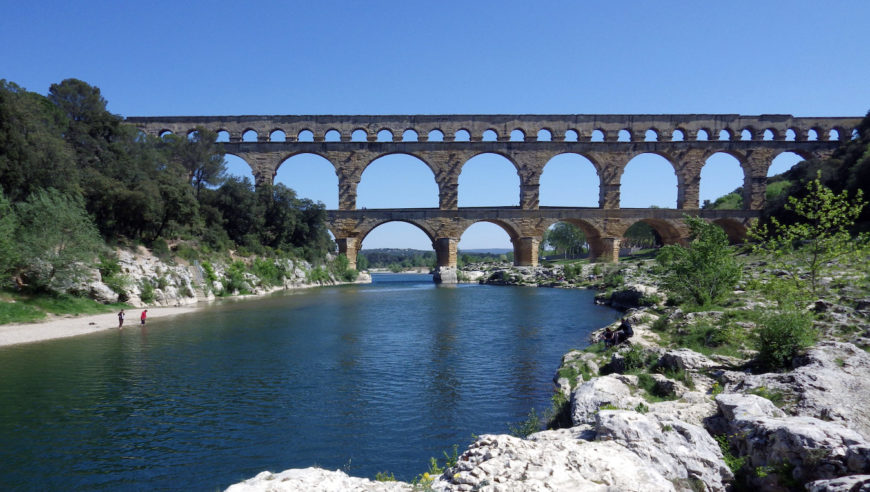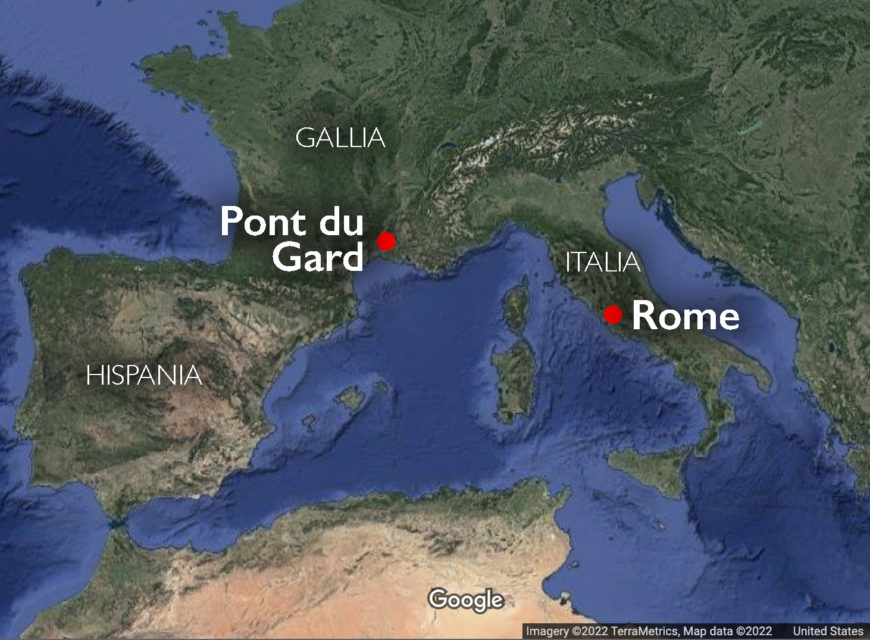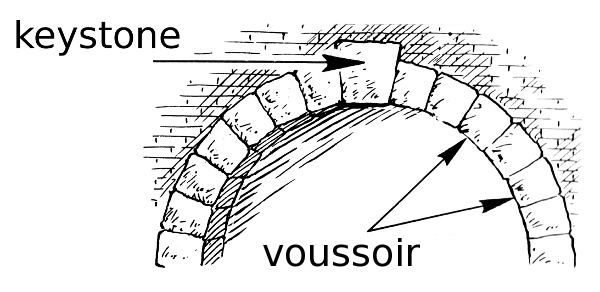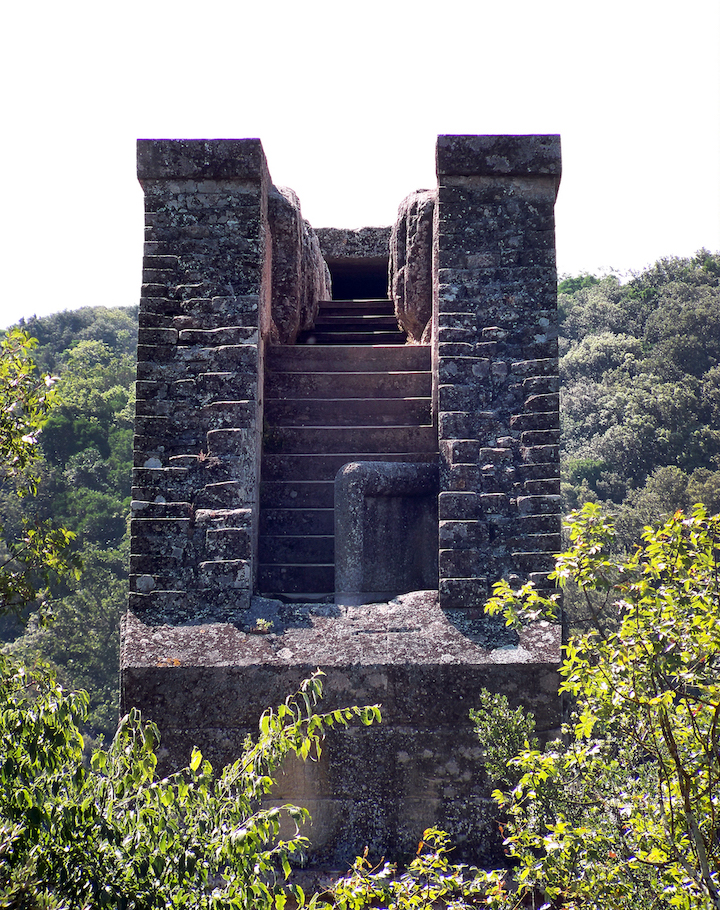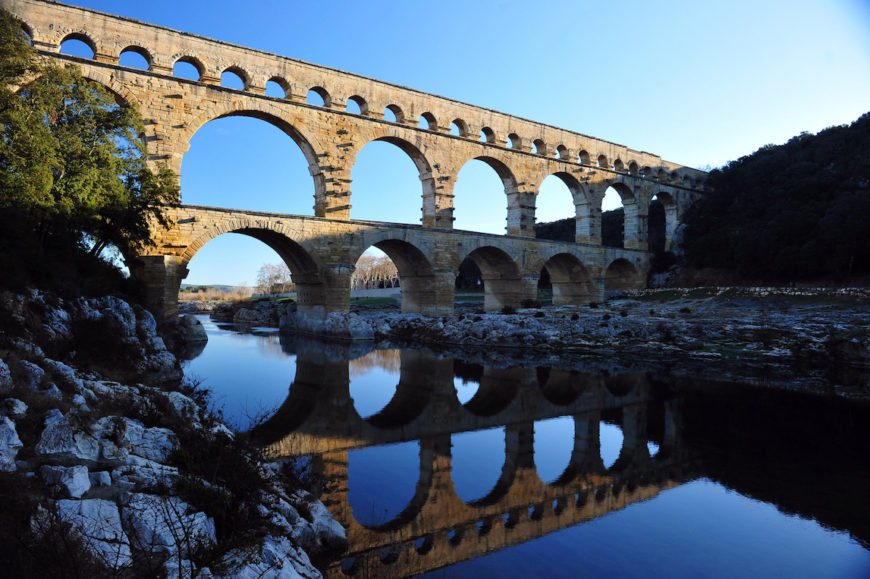
Pont du Gard, Provence, France, late 1st century B.C.E. (photo: Tiberio Frascari, CC0)
A triple tier of arches rises 160 feet above the rushing river. Once, the top level of the structure carried its own flow of water, but now, the water channel remains dry. Today, the bridge transports only tourists and hikers from one side of the Gard River to the other as heavy arches soar high above their heads.
The Pont du Gard is one of the greatest public works projects spearheaded in the Augustan age. The French toponym Pont du Gard means “bridge of Gard” because it spans the Gard River near Nîmes, France.
History
Since the 4th century B.C.E, the ancient Romans constructed aqueducts, like the Pont du Gard, to carry water from further away sources, like mountains and springs, to provide sufficient clean water to urban populations. This first began in the city of Rome, but as Roman hegemony expanded, so, too, did the use of aqueducts in other cities and territories across the Mediterranean.
Gallia or Gaul (modern-day France) was conquered by Augustus’ adopted father Julius Caesar during the Roman-Gallic Wars of 58–50 B.C.E. After that time, many Roman military veterans began to settle in colonial cities like ancient Nemausus (modern day Nîmes), because they were given plots of land as thanks for their participation in the war. Within a few decades, the population of Nimes had boomed to around 30,000 people. Much of this population boom can also be credited to Augustus, who undertook a number of construction projects in the city. A large population requires a large amount of potable (drinkable) water, necessitating the construction of an aqueduct.
However, the aqueduct served a greater purpose than as just a water conduit; it was also a testament to the power and prosperity of the Augustan Age. Through structures like this, Augustus could emphasize the extent of his reach in all areas of the empire, united under his sole control, and garner widespread public favor. The Pax Augusta, or Peace of Augustus, was considered a golden age of Rome, one which brought peace to the empire after the turbulent end of the Roman Republic and which ushered in a new period of wealth, abundance, and civic pride. The Pont du Gard was one of many projects designed to enhance the lives of people throughout the empire, from aqueducts to a new public forum in the heart of Rome. Other buildings constructed in Nemausus during the Augustan age include a city wall with gates and bastions, the temple known today as the Maison Carrée, and a nymphaeum (grotto or shrine) erroneously labeled the Temple of Diana.
A Roman feat of engineering
Construction began in 20 B.C.E. under the guidance of Marcus Agrippa, a close ally and soon-to-be son-in-law of the emperor Augustus, who was also responsible for the construction of the Maison Carrée. Today, the Pont du Gard is only a portion of what was once a 31-mile long (50 km) aqueduct that carried fresh water from distant springs to the city of Nemausus (modern day Nîmes).
A true testament to the ingenuity and skill of Roman engineering, the water was predominantly carried that long distance by gravity. This meant that the architects and engineers needed to calculate how to very gradually lower the slope within the aqueduct water channel. In addition, they also needed to bridge areas where the terrain changed, like the river, and still keep the water channel at the appropriate height.
The limestone used at the Pont du Gard was extracted from a nearby quarry. In total, 50,400 tons of rock, individually numbered, were transported by boat down the river to the construction site to create the span. [1] Once complete, the aqueduct supplied enough water to provide all 30,000 residents of Nemausus with 100 gallons of water each per day and kept all bath complexes, fountains, and other structures throughout the city well supplied.
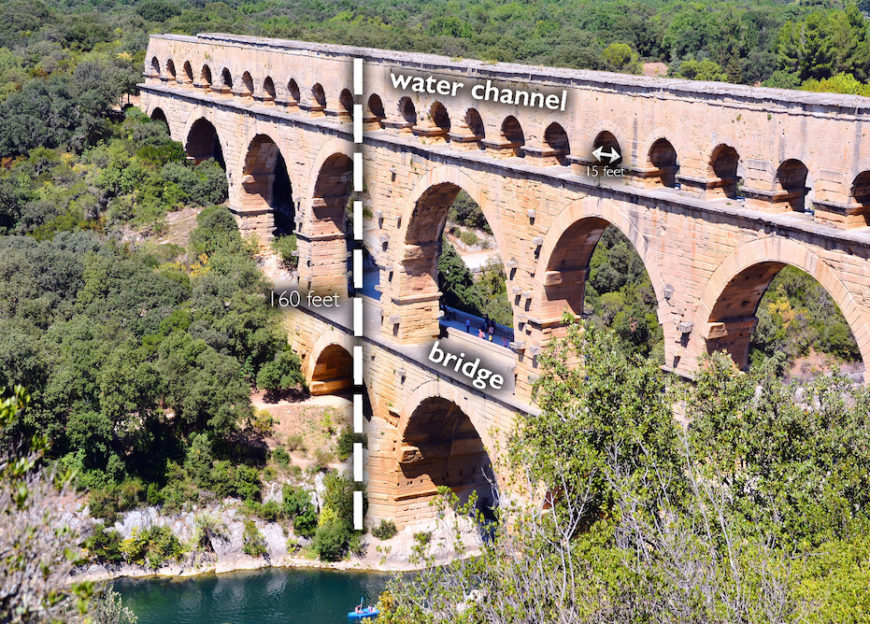
Pont du Gard, Provence, France (photo: Mike McBey, CC BY 2.0)
The Pont du Gard is constructed with three tiers of arches placed atop one another. The largest of the arches has a length of 82 feet. This particular arch bridges the river itself as none of the piers, or large supports, actually stand in the water. The bottom and middle tiers feature arches of equal widths, but the third tier, which holds the actual water channel, features a series of smaller arches that are each 15 feet wide. Together, the tiers are approximately 160 feet tall.
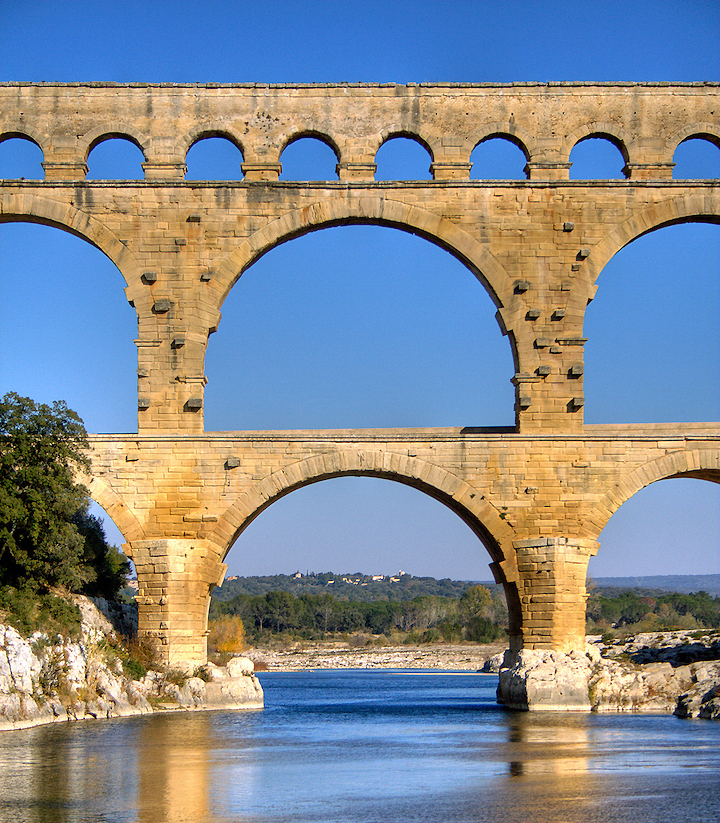
Pont du Gard, Provence, France (photo: Roberto Ferrari, CC BY-SA 2.0)
Constructing an arch
Although arch construction first developed in the 2nd millennium B.C.E. in Mesopotamia, it was the ancient Romans who refined and popularized it as a construction technique after they realized the true potential of arch construction—such as allowing for taller structures and wider spans.
To build a stone arch, first the Romans needed to construct a frame built out of wood in the shape of an arch connecting two piers. Then, wedge-shaped stones known as voussoirs would be placed over the frame. Due to the immense weight of these stones, the Romans used wooden cranes to lift them and set them into place.
The very last stone to be placed was the one in the center known as the keystone, which was quite literally the key to holding the arch together. Without the keystone, once the wooden frame was removed, the arch would fall apart. The keystone is essential to arch construction because the thrust of the weight of the stone construction moves from the keystone in the center outwards to the rest of the arch. This is what keeps the stones in place. In fact, this is such an effective construction method that no mortar was required between the stones. The weight of the stones would then be distributed downward into the piers on either side of the arch.
Maintaining the aqueduct
Roman aqueducts did require periodic maintenance. For this reason, water channels were usually around a height of 6 feet to allow someone to enter the channel and repair them. At the Pont du Gard, part of that maintenance included scraping away calcium carbonate deposits that would appear on the stone walls within the channel (the limestone used for the aqueduct had a large calcium carbonate concentration). Someone would also need to enter the channel if there were blockages or if vegetation started growing between the gaps in the stone. Stone blocks projecting from the otherwise flat surface of the aqueduct, which were used to support the wooden frames and scaffolding used during construction, were left in place to support scaffolding for future structural maintenance.
By the 4th century C.E., the power of the Roman empire declined, particularly in western Europe, and eventually, the aqueduct was no longer maintained and cleaned. Parts of it fell completely into disuse. Luckily, the Pont du Gard survived due to its dual purpose of also acting as a bridge across the river, even as other nearby ancient structures were quarried for their stone.
Today, the Pont du Gard is a UNESCO World Heritage Site, open for visitors to explore. Unfortunately, according to UNESCO, the Pont du Gard is tilting a few millimeters each year and may eventually collapse. [2]

